Illustrated Review: The NHL's most effective slap shot belongs to Artemi Panarin
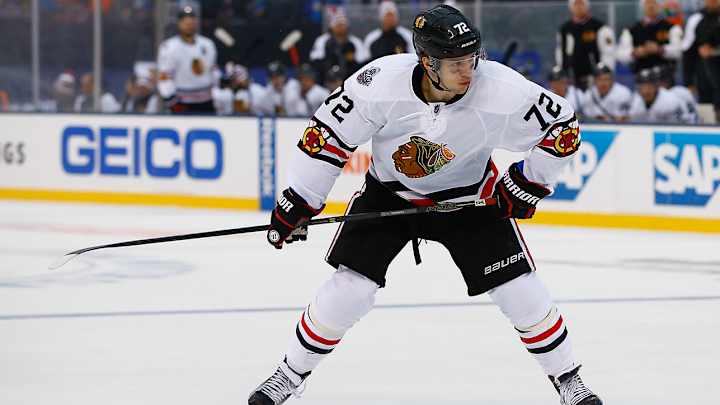
With every passing time Artemi Panarin raises his stick blade off the ice, rotates his shoulders through his body, and uses the kinetic energy to put a charge into the puck, he's becoming more and more like a 15-year-old Kenan Thompson.
No, it's not because Panarin is getting ready to exclaim his shot selection, and no, it's not because said ensuing shot will defy the laws of physics, dipping and diving on its path to the crease while simultaneously creating a hypnotic effect that renders goalies without their fine motor skills.
Those talents belonged to Russ Tyler, whom a teenaged Thompson portrayed in D2: The Mighty Ducks. But what Panarin has in common with his fictitious hockey counterpart is a tool in his arsenal that is becoming as unstoppable is Tyler's knuckle puck.
Since Panarin's NHL career began with the Chicago Blackhawks in 2015, he has scored on more slap shots (19) than any other forward. Montreal Canadiens defenseman Shea Weber (25) is the only player with more slap-shot goals than Panarin over the past two seasons. Panarin though has taken 92 slap shots compared to 168 for Weber, meaning Panarin has scored on 20.65 percent of his slap shots, while Weber has scored on 14.88.
Illustrated Review: Searching for a link between face-off wins and longterm success
This season, Panarin's 11 slap-shot goals pace all skaters, with one more than Weber.
Panarin won the Calder Trophy as the NHL's best rookie in 2016, on the strength of success many felt was buoyed by linemate Patrick Kane. The Blackhawks brass liked what they saw enough to award Panarin a two-year contract extension that will pay him $6 million annually through 2019.
And Panarin has continued to be offensively effective in Year Two. Though his production has dipped from 0.96 points per game to 0.89, he still ranks in the top 20 in the NHL in that category. Over the past decade, it also ranks in the top 20 for points per game in a player's second season.
Of Panarin's 135 career points, 50 have come via goals, giving him the spread of a goal scorer. Panarin's slap shot has been the most efficient by far, accounting for 19 of those scores with the aforementioned 20.65 shooting percentage. Panarin has scored 24 goals off wrist shots, though he has taken 189 of those, a shooting percentage of 12.70.
Which is far closer in line with Panarin's overall percentages: On all other shots besides his slap shots, Panarin has scored on 12.55 percent, a steep decline. Panarin's slap shot boosts his overall percentage by over two points, which is very significant.
There aren't other players in the same neighborhood, either. Steven Stamkos has scored 14 slap shot goals on 90 slap shots over the past two seasons, good for 15.56 percent, and that number isn't changing soon. Kevin Shattenkirk has scored 12 on 94 (12.78 percent), and Evgeni Malkin, maybe the only true comparable, has scored 13 on 61 (21.31 percent). But while Malkin is as efficient, Panarin has six more goals.
Which begs the question: Why is Panarin so effective when taking slap shots?
There's actually a timeline to establishing Panarin's slap shot. Over his first 40 career games, he scored on it once (on 11 shots). In the 105 games since, Panarin has connected on it 18 times on 81 shots.
Each of Panarin's slap shot goals have come on one-timers, a topic Scott Powers covered at length for The Athletic.
Illustrated Review: Despite point totals, Vlasic, Spurgeon among top offensive defensemen
The right-handed Panarin scores the majority of these goals from the left side of the ice. On the power play, the Blackhawks' deployment of the 25-year-old forward is very Ovechkian: he lives near the left circle. With the likes of Kane, Brent Seabrook, and Duncan Keith on the same unit, Panarin isn’t the same lightning rod for attention his countryman is. Panarin is second on the Blackhawks in power-play goals during his tenure (15, with seven one-timed slap shots) to Kane's 23.
One of the catalysts behind Panarin's slap shot success at even-strength is Chicago's ability to create space for him. Of his 5-on-5 slap shot goals (there have been 11) six have come off transition chances, but not odd-man rushes (two 2-on-2's, and four 3-on-3's).
These aren’t normally sequences that portend one-timing opportunities, yet Chicago, and mostly a combination of Kane and Artem Anisimov, has excelled at getting Panarin into isolated spaces.
Panarin creates a turnover in the neutral zone, and Chicago hits the line for a 3-on-3. Kane, with space on the bottom of the frame, will take a pass and get a clean carry-in. That will force a Bruin outside but Boston is still adequately covered in its defensive zone.
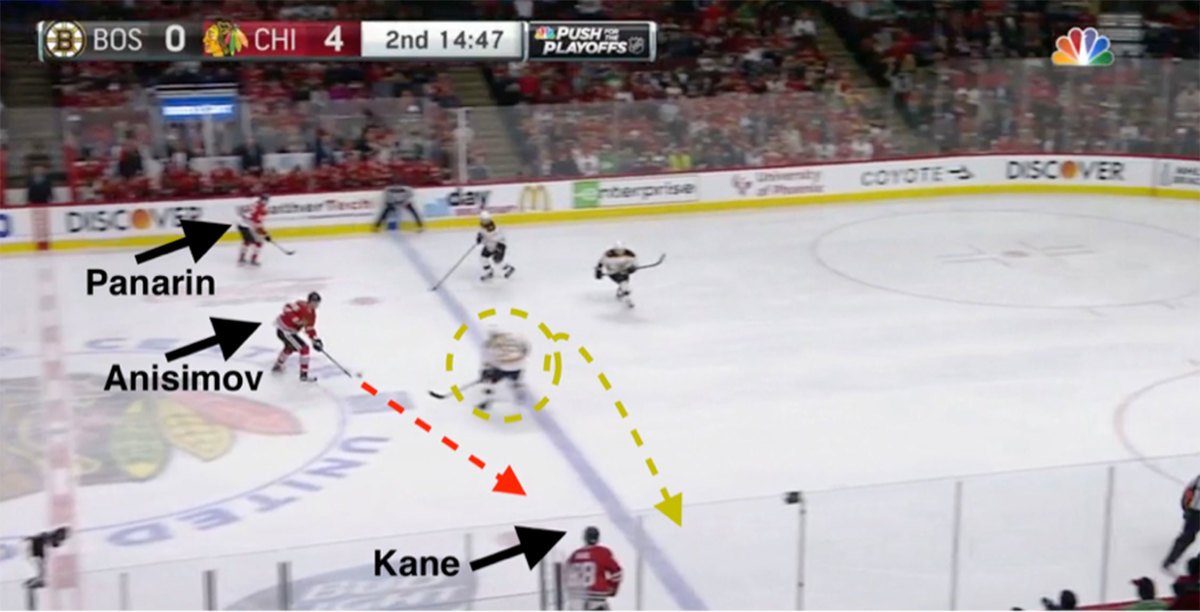
This is where Chicago turns a pedestrian play into a goal. Kane has lots of time and space, and can let the play develop. Anisimov plays the role of lead blocker, and this is almost like a delayed handoff with a fullback clearing a path. Panarin waits for his linemate to occupy the two Bruins at the top of the frame, and then Panarin sits in the pocket of ice created by the movement.
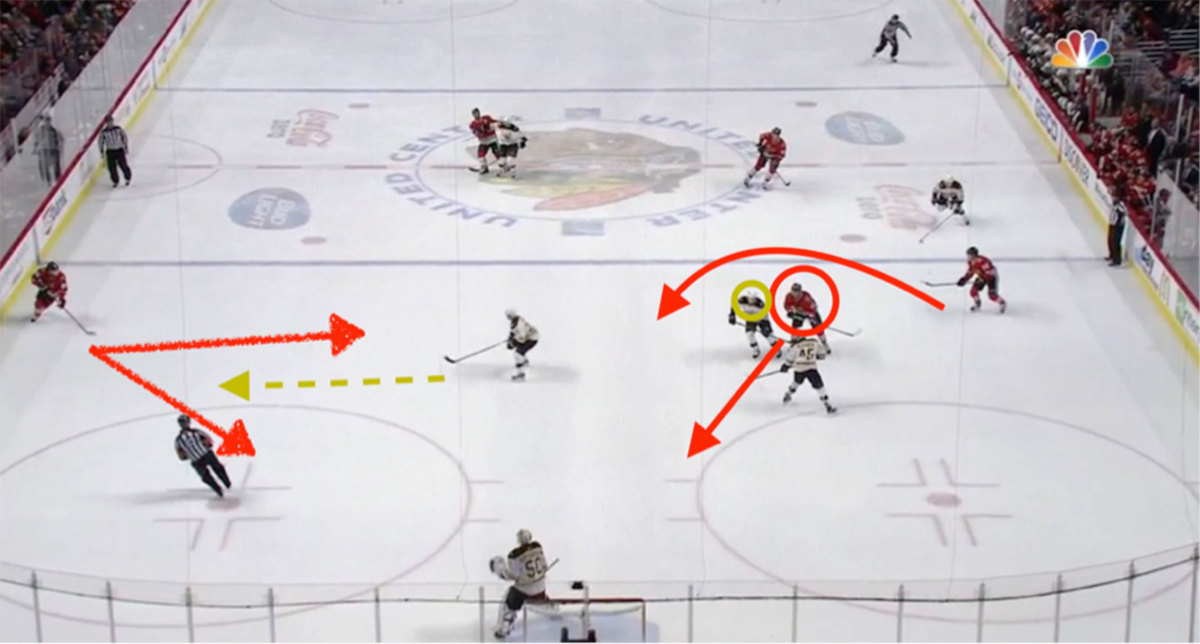
Finally, Panarin connects with the puck at the perfect moment. Borrowing a quote from an NHL scout from Powers's story illuminates how precise Panarin's technique is.
"Accuracy to the short side," one NHL scout said. "He has great front-foot discipline and can hold his technique on passes outside his skate base."
If Panarin is off by a few inches or less than a second, his posture will completely alter the path and pace of his shot. But he meets Kane's pass with his front foot and top hand level with the puck, contorting his body and almost going down to one knee to keep himself level.
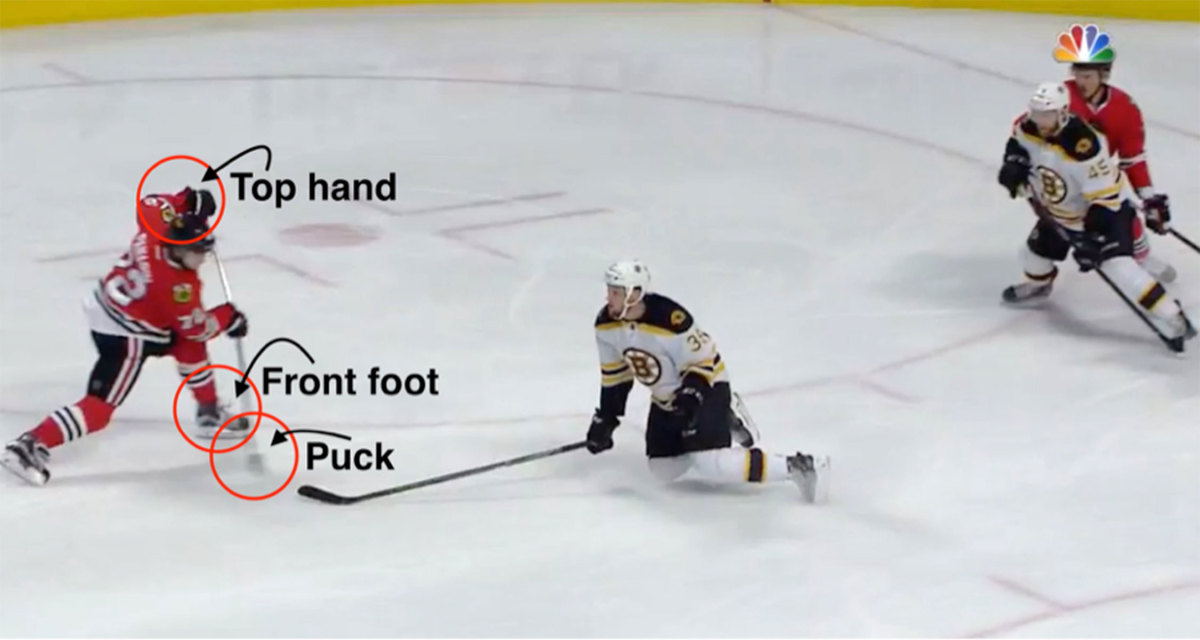
On this rush against the San Jose Sharks, Panarin creates space for himself by drifting far enough away from a defenseman to open up a passing lane, and buying himself just enough time to get off a shot and score.
Chicago hits the line for what's technically a 3-on-2, but Joe Pavelski is hot in pursuit. With Kane buried at the top of the frame, Brent Burns can stay with Panarin, or, if Pavelski gets back, rotate down to Kane.
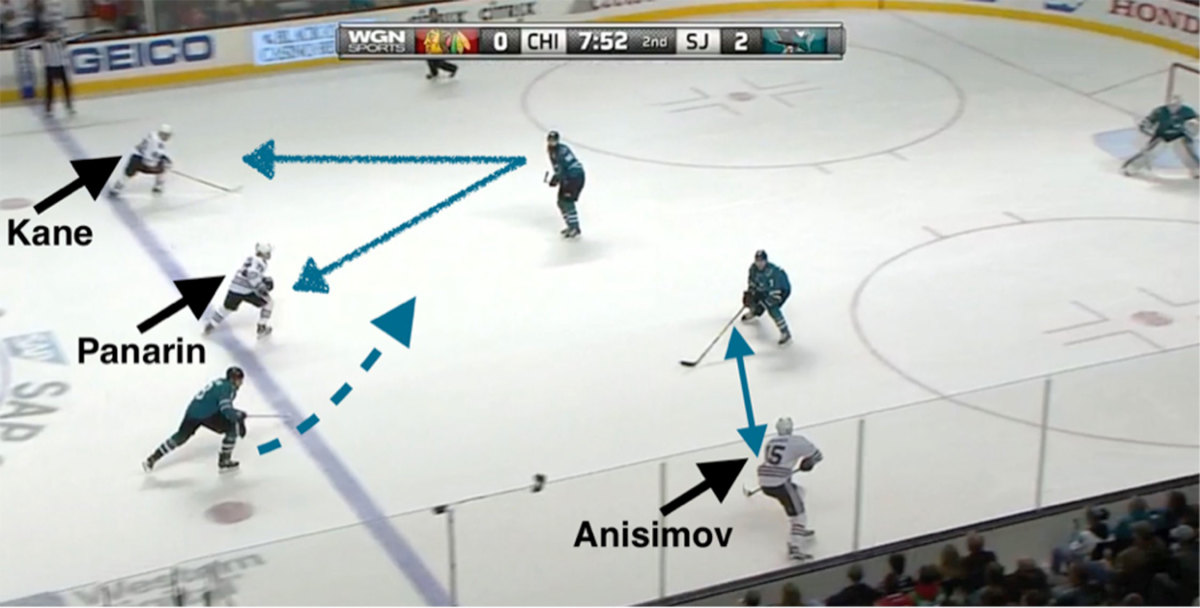
It never comes to that for Burns though, and Kane doesn't have much of an influence on this sequence. With Burns backpedaling, Panarin eases up, creating a diagonal passing lane for Anisimov. It's a small window but one Panarin can capitalize on.
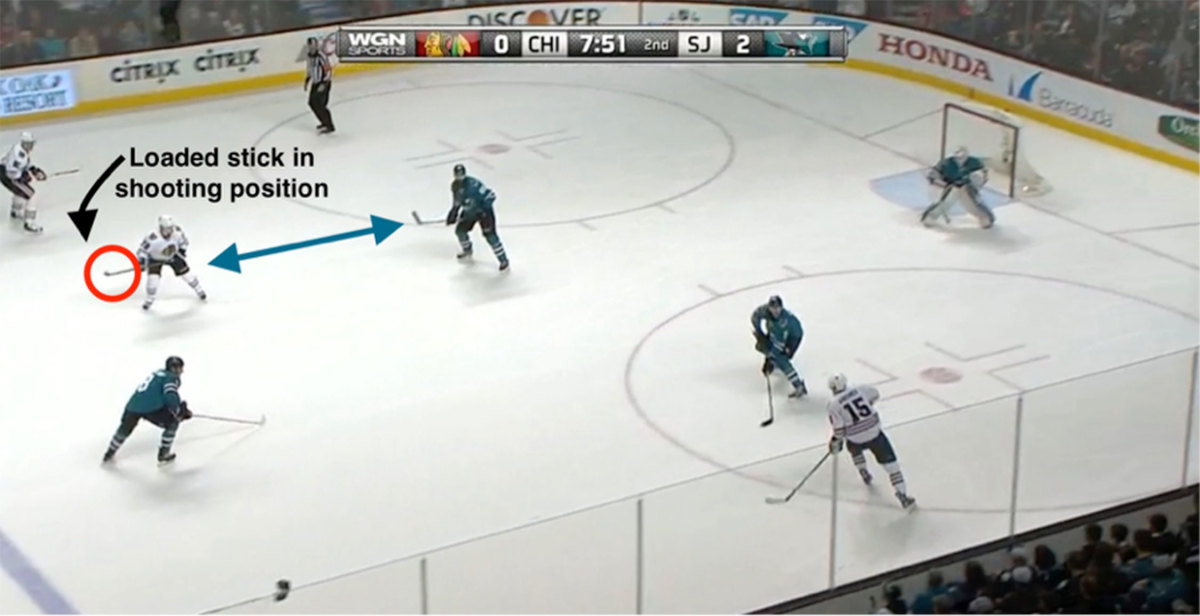
It's just this little motion right here from Panarin, who opens his hips, loads his stick, and goes from second to first gear and by doing so creates separation from Burns.
Now, even with Burns using every inch of his 6-foot-5 wingspan, Anisimov connects with Panarin, who buries a one-timer to the short side, beating goaltender Martin Jones to the post.
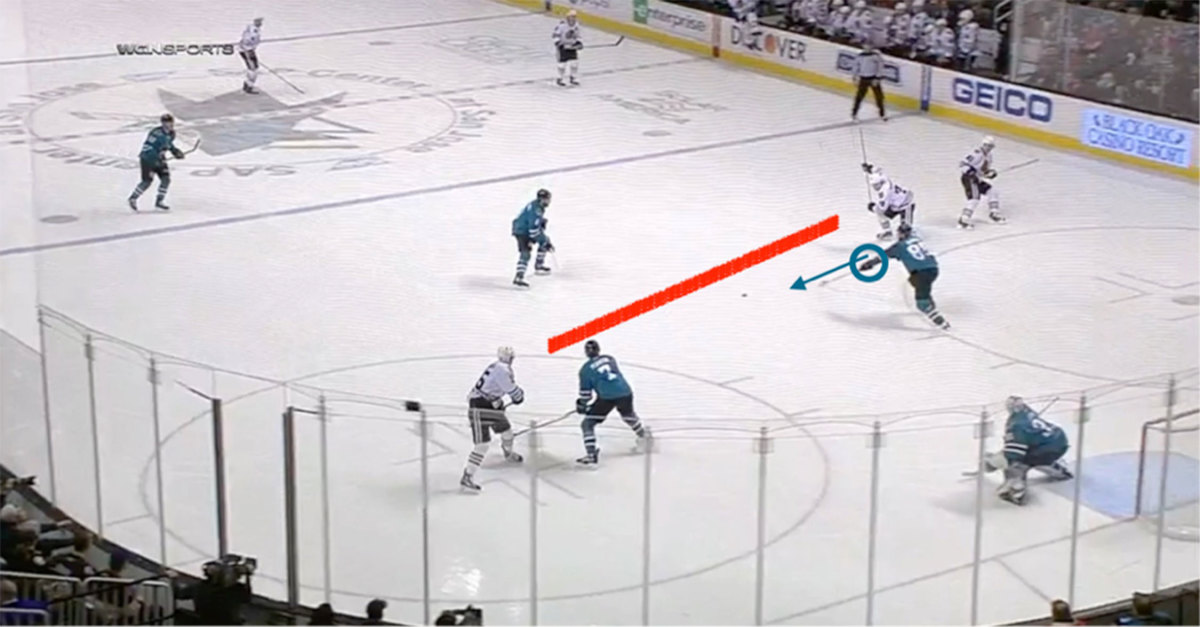
To choreograph these kinds of sequences, Chicago needs pinpoint precision and perfect spacing. These types of plays are all about timing: From being in the right spot, to delivering the pass, and catching a goalie before he can push to the other side of his crease.
When the Blackhawks do all these things in chorus, Panarin has the technical skill to turn these opportunities into goals. Over his past 100 games, the left-wing has added a new, lethal wrinkle to Chicago's already potent offense.
